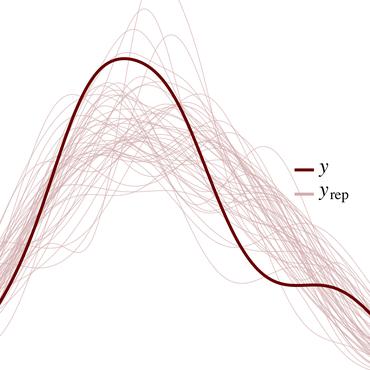Search Results for author: Tzu-Mao Li
Found 13 papers, 6 papers with code
Differentiable Monte Carlo Ray Tracing through Edge Sampling
1 code implementation • SIGGRAPH 2018 • Tzu-Mao Li, Miika Aittala, Frédo Durand, Jaakko Lehtinen
We introduce a general-purpose differentiable ray tracer, which, to our knowledge, is the first comprehensive solution that is able to compute derivatives of scalar functions over a rendered image with respect to arbitrary scene parameters such as camera pose, scene geometry, materials, and lighting parameters.
Inverse Path Tracing for Joint Material and Lighting Estimation
no code implementations • 17 Mar 2019 • Dejan Azinović, Tzu-Mao Li, Anton Kaplanyan, Matthias Nießner
We introduce Inverse Path Tracing, a novel approach to jointly estimate the material properties of objects and light sources in indoor scenes by using an invertible light transport simulation.
Differentiable Visual Computing
no code implementations • 27 Apr 2019 • Tzu-Mao Li
Simulating light transport in the presence of multi-bounce glossy effects and motion in 3D rendering is challenging due to the hard-to-sample high-contribution areas.
DiffTaichi: Differentiable Programming for Physical Simulation
2 code implementations • ICLR 2020 • Yuanming Hu, Luke Anderson, Tzu-Mao Li, Qi Sun, Nathan Carr, Jonathan Ragan-Kelley, Frédo Durand
We present DiffTaichi, a new differentiable programming language tailored for building high-performance differentiable physical simulators.
Differentiable Vector Graphics Rasterization for Editing and Learning
1 code implementation • ACM Transactions on Graphics 2020 • Tzu-Mao Li, Michal Lukáč, Michaël Gharbi, Jonathan Ragan-Kelley
We introduce a differentiable rasterizer that bridges the vector graphics and raster image domains, enabling powerful raster-based loss functions, optimization procedures, and machine learning techniques to edit and generate vector content.
Adversarial examples within the training distribution: A widespread challenge
1 code implementation • 30 Jun 2021 • Spandan Madan, Tomotake Sasaki, Hanspeter Pfister, Tzu-Mao Li, Xavier Boix
This result provides evidence supporting theories attributing adversarial examples to the proximity of data to ground-truth class boundaries, and calls into question other theories which do not account for this more stringent definition of adversarial attacks.
Designing Perceptual Puzzles by Differentiating Probabilistic Programs
no code implementations • 26 Apr 2022 • Kartik Chandra, Tzu-Mao Li, Joshua Tenenbaum, Jonathan Ragan-Kelley
We design new visual illusions by finding "adversarial examples" for principled models of human perception -- specifically, for probabilistic models, which treat vision as Bayesian inference.
Differentiable Rendering of Neural SDFs through Reparameterization
no code implementations • 10 Jun 2022 • Sai Praveen Bangaru, Michaël Gharbi, Tzu-Mao Li, Fujun Luan, Kalyan Sunkavalli, Miloš Hašan, Sai Bi, Zexiang Xu, Gilbert Bernstein, Frédo Durand
Our method leverages the distance to surface encoded in an SDF and uses quadrature on sphere tracer points to compute this warping function.
Factorized Inverse Path Tracing for Efficient and Accurate Material-Lighting Estimation
1 code implementation • ICCV 2023 • Liwen Wu, Rui Zhu, Mustafa B. Yaldiz, Yinhao Zhu, Hong Cai, Janarbek Matai, Fatih Porikli, Tzu-Mao Li, Manmohan Chandraker, Ravi Ramamoorthi
Inverse path tracing has recently been applied to joint material and lighting estimation, given geometry and multi-view HDR observations of an indoor scene.
Acting as Inverse Inverse Planning
no code implementations • 26 May 2023 • Kartik Chandra, Tzu-Mao Li, Josh Tenenbaum, Jonathan Ragan-Kelley
Great storytellers know how to take us on a journey.
Neural Free-Viewpoint Relighting for Glossy Indirect Illumination
no code implementations • 12 Jul 2023 • Nithin Raghavan, Yan Xiao, Kai-En Lin, Tiancheng Sun, Sai Bi, Zexiang Xu, Tzu-Mao Li, Ravi Ramamoorthi
In this paper, we demonstrate a hybrid neural-wavelet PRT solution to high-frequency indirect illumination, including glossy reflection, for relighting with changing view.
Differentiable Visual Computing for Inverse Problems and Machine Learning
no code implementations • 21 Nov 2023 • Andrew Spielberg, Fangcheng Zhong, Konstantinos Rematas, Krishna Murthy Jatavallabhula, Cengiz Oztireli, Tzu-Mao Li, Derek Nowrouzezahrai
This approach is predicated by neural network differentiability, the requirement that analytic derivatives of a given problem's task metric can be computed with respect to neural network's parameters.
WatChat: Explaining perplexing programs by debugging mental models
1 code implementation • 8 Mar 2024 • Kartik Chandra, Tzu-Mao Li, Rachit Nigam, Joshua Tenenbaum, Jonathan Ragan-Kelley
Often, a good explanation for a program's unexpected behavior is a bug in the programmer's code.



